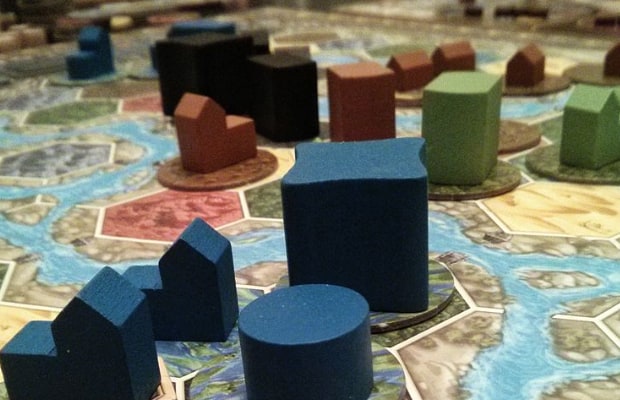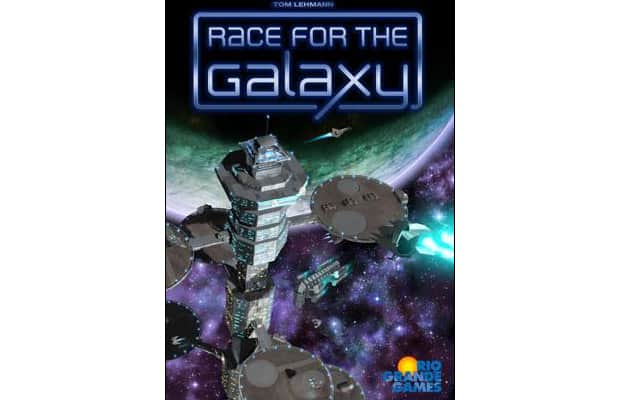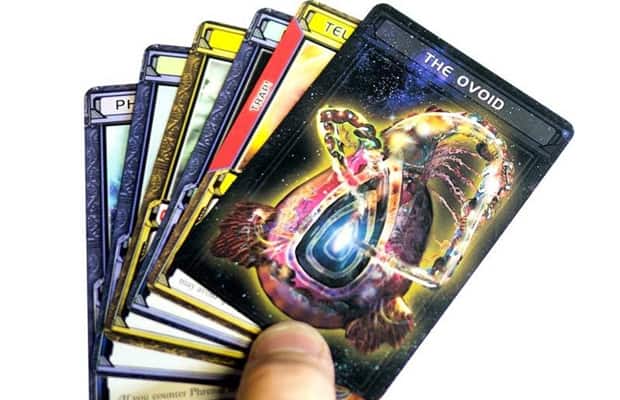
I first met the charismatic Jeff Siadek at a local game store open house with his latest Kickstarter. I thought Jeff was new to game making, but it turns out it wasn’t his first rodeo at all! This month he’s even proving that you can take a older design and bring it to life again as he’s launched (and immediately funded) the v2 of Battlestations. With all that experience tweaking games, he gives us a trial by fire guest post on game balance. –Peter Vaughan
—
BALANCE IS EPHEMERAL, FLEETING, PURE, THE HOLY GRAIL OF GAME DESIGN.
BALANCE IS A FICKLE PHANTASM AND AN UNATTAINABLE PLATONIC IDEAL.
BALANCE IS A LIE, AN ILLUSION AND BOTH A STREETWALKER IN A DARK ALLEY AND HER BOSS WITH BRASS KNUCKLES ALL ROLLED INTO ONE.
—
We all want a balanced game, right? What does that mean? Does it mean the players have an equal chance of winning? Do we account for asymmetry? luck? experience? skill? All games are asymmetrical. Even classical abstracts such as chess or go have a starting player. Denying these differences ignores valuable components in crafting the gaming experience. Our first task is to recognize that balance is unattainable. Our second task is to obtain it. (All right, we’ll approximate it).
News Flash: All things aren’t equal and it is all right. Just like in real life things are never balanced but we make a go of it the best we can. Understanding and embracing the imbalances is how we can approximate balance. Just as it is impossible to draw a perfect circle because the symmetry breaks down long before you get to the molecular level, it is impossible to make a balanced game because every aspect of the experience conspires to thwart balance. The drawing of a circle is best performed with constant course corrections. A compass can help here. Of course, we’ll need a multidimensional compass to design a game rather than a circle. The course corrections come in the form of the various imbalances we build into the game. Many of the things that conspire against balance can be used in a form of game-design aikido to work in your favor. Don’t despair, let’s review the tools in your arsenal.
Balance doesn’t mean “the same”. You can put a pound of feathers on one side of the scale and a one pound book about chickens on the other side and the scales will balance. If I need a pillow, I’ll take the feathers, but the book will be more valuable if I’m trying to run a chicken farm. One of the keys to good game design is building your system so that there are equivalencies. Elements within the system create an economy and ideally, that economy is fluid.
OTHER PLAYERS.
I hate this one but it is one of the best and most obvious tools to keep a game close. This includes any mechanic that allows for player interaction. In a multiplayer wargame such as “Risk”, do I attack the guy in the lead or try to gain power by attacking the weak player? Do I refuse to trade with the leader in “Settlers” or take resources they are keen on in Agricola? Hopefully, there are enough subtleties in the game that these issues become part of a complex thought process rather than obviating all other decisions. Ideally, a game will have enough texture in it so “Who’s in the lead?” will be only one of the factors in your decisions. As the designer, you choose which elements to include. Player interaction is an important throttle. With too much interaction all games devolve into The Worst Game Ever. With too little interaction they become simultaneous solitaire. And again balance rears its ugly head.
STARTING POSITIONS.
The starting positions create the narrative that describes the story arc of your game. In Chess, the starting positions look the same but since white goes first, they are on the offensive. Black responds and you are off down the path of an opening game. In Chess, the starting player advantage is offset by playing two games giving each player a chance to be white. A proper asymmetrical game will have great differences in starting position that takes into account the powers of the different positions. You can give a head start to one position because you know it is going to have a tougher time getting to the finish. Obvious asymmetric games are really about telling two or more stories at the same time. The arcs of these stories interact in ways that make it compelling. How often has a game ended and you would have won on your next turn?

VARIABLE POWERS.
This is the standard definition of an asymmetric game. “Terra Mystica” uses vastly different powers that end up being extraordinarily well balanced. If there is a formula for balancing different powers, it is beyond me. This is the kind of thing you have to find through intelligent testing. It would take forever for a room full of monkeys to type out Shakespeare’s work but with a keen eye to editing, choosing a page here or there, you could do it in half the time. Test your powers against each other, against themselves, against nothing at all. There is no substitute for testing.
ECONOMICS.
By allowing players to bid for resources, you let the economy float to find balance. Goa does a great job of this. How much are 3 ships and 3 settlers worth? As much as anybody is willing to pay. The dangers in any type of auction system are that sometimes one or more players are not in a position to contest the bidding and resources can be had at a steal. “Small World” uses VP in its economic mechanic so you never run out. By paying points onto less favorable options, they increase their value incrementally until they become attractive.

PHASING.
Games that have different phases of play such as Race for the Galaxy let you limit the times in which a power is active. +1 payment when trading isn’t worth anything if there is no trading phase in a round.

MULTIDIMENSIONAL VICTORY CONDITIONS.
I’m a big fan of the Chaosmos single victory condition: have the ovoid card in your hand at game end. If you need help balancing your game, you can turn this upside down and make a more intricate victory condition. Agricola does this best with its approach to building a better farm. You have to have lots of everything to win. If you have a “food engine” that will help you a lot for feeding and such but even infinite food isn’t as good as a well balanced farm. I believe Knizia does multidimensional Victory in approximately 12,875 times out of his 13,253 published games.
MORE VARIABLES.
A strong position has to be strong against more angles. Having more variability means you can’t plan for every contingency. Of course when there are more things going on in a game, there are more possibilities for imbalance. A broken combo can ruin a game. Magic: The Gathering is the best example of a game where the arithmetic increase in the number of cards creates a geometric increase in potential for both good and evil.
VARIABLE ENDING.
When you don’t know exactly the game is going to end such as in Ticket to Ride you have to make your plans flexible. Do I start that long cross country haul this late in the game?
MAKE IT BRIEF.
This is my least favorite because it doesn’t fix anything. It just takes advantage of the fact that people’s ability to forgive is proportional to their time investment. If I play a brilliant game of Shanghai Trader for 2 hours and then I roll the wrong number at the airport, I’m going to be pissed. When somebody eliminates me at any point in a 5 minute game of Love Letter, I laugh it off.
Use these tools wisely. Some are double-edged and will cause more trouble than they are worth. All have their place in the grand balance of games.
—
Jeff Siadek is the designer of Lifeboat, Battlestations, Desert Island, the Worst Game Ever, Monster Derby, Who Would Win, 99 Chances, Hunting Party, Caesar, Palaces, Pantheon, RoboTanks, Throwing Stones, Total War, Wordariffic, World Conquerors, and many more games. He hopes to design a balanced game some day.
You can check out the Battlestations Second Edition here: https://kck.st/1o1Je3O








